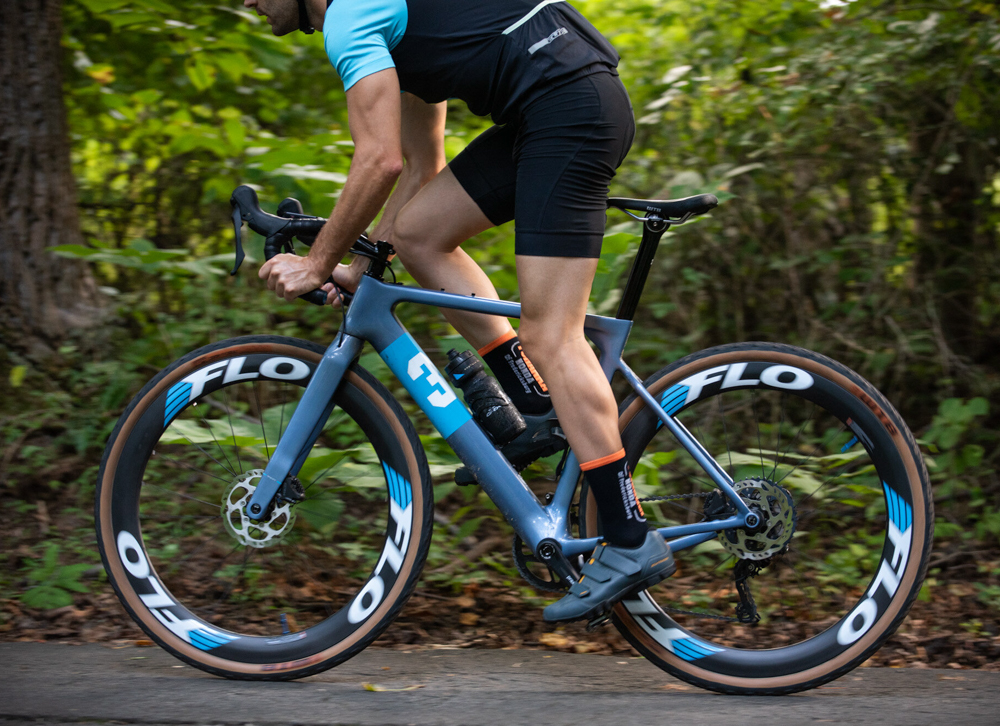Let’s start with the number one thing we want you to know:
The goal for any gravel cyclist is to use the watts you put into pedals to move you forward, efficiently.
Aerodynamics, rolling resistance, watts, etc, all fall into the “being faster efficiently” category but they don’t matter much if you don’t understand why they matter to YOU as a cyclist. Don’t worry, future emails include an in depth look into all the things, but for now, let’s cement the concept of cycling efficiency and expand your knowledge. (Side note: Convince yourself now these things matter for gravel cycling.)

Cycling Efficiency and Cycling Performance
A simple, scientific definition of riding a bike- you, the rider, apply power to the pedals with your legs and that power turns the wheel to move the bike forward. The power you apply with your legs is measured in watts (W).
Your power meter says you applied 200 W to the pedals. You may assume that all those watts were used to move the bike forward. But you know what they say about assuming…😉
Mechanical Systems
In a mechanical system, an “Ideal machine” is where efficiency is 💯% – there is no loss of energy in the system. So, 200 W in equals 200 W out. An “Ideal Machine” is impossible to create because all mechanical systems experience energy losses. While we all wish to be an “ideal machine” sadly, we are not, and only a percentage of the watts you put in will move you forward.
Mechanical Losses
You can lose energy in a mechanical system through heat, sound, and light. In cycling, the most common is heat, followed by sound. (Losing energy to light does not really apply unless you are using a dynamo to power a light.)
Mechanical losses through heat and sound show up as friction between the chain links, friction in bearings, aerodynamic drag (yes, this is converted to heat and sound), and rolling resistance.
System Efficiency
To determine system efficiency, you perform a simple calculation.
Mechanical Efficiency = (Total Power Output (W)/Total Power Input (W)) * 100
Let assume you put in 200 W and after losses are calculated, it’s determined that 180 W are moving the you forward. This would lead to a Mechanical Efficiency of 90%.
Mechanical Efficiency = (180 W/ 200 W) * 100 = 90%
The Fastest Cyclists Are The Smartest Cyclists
I think you can see where we’re going with this. If not, let me state here thatreducing your mechanical losses is the key to becoming a more efficient cyclist. Finding ways to make your bike more efficient will get you more speed out of the watts you apply to the pedals. If applying every mechanical advantage takes a bike from 70% efficiency to 90% efficiency, you would be using 40 more watts to move you forward instead of those watts being lost to heat or sound. That’s a huge difference.
70% Efficient = (140 W /200 W) * 100
90% Efficient = (180 W /200 W) * 100
180 W – 140 W = 40 W
In my 10 years in this industry, it never fails that the fastest gravel cyclists find every mechanical advantage they can.
Wheel 1:1
If you’d like to learn more about mechanical efficiency or the wheels that would make you the most efficient, please feel free to book a Wheel 1:1.

Co-founder at FLO Cycling. Jon manages the day to day operations and acts as the lead engineer for all FLO products.
